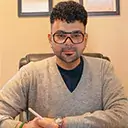Seborrhoeic Dermatitis Vs Dandruff: Dandruff is a mild scalp condition caused by excess oil and yeast overgrowth, leading to white flakes and itching. Seborrhoeic dermatitis is a more severe, chronic form that causes yellowish scales, redness, and inflammation on the scalp and other oily skin areas.
When it comes to an itchy, flaky scalp, many people confuse Seborrhoeic Dermatitis Vs Dandruff, assuming they’re the same. They’re not, and mistaking one for the other can lead to months of ineffective treatments and frustration. Dandruff is a common scalp nuisance, while seborrhoeic dermatitis is a chronic skin condition that demands medical attention. Both share symptoms like flaking and itching, but their causes, severity, and management differ significantly. In this blog, you’ll learn how to tell them apart, why it matters, and the right steps to restore scalp health and lasting relief.
Why People Confuse Seborrhoeic Dermatitis with Dandruff
Both conditions cause scalp flakes, itching, and visible discomfort. On a surface level, the symptoms overlap so much that most people reach for an anti-dandruff shampoo, assuming it will solve everything. When it doesn’t, the cycle of irritation continues. The truth is simple: while dandruff is manageable with over-the-counter remedies, seborrhoeic dermatitis is a chronic inflammatory disorder that extends beyond the scalp.
What is Dandruff?
Causes of Dandruff
Dandruff is caused by an overgrowth of a naturally occurring yeast called Malassezia, which feeds on scalp oils. Excess oil production, poor hygiene, or sensitivity to hair products can worsen the problem. Environmental triggers such as cold weather and stress also play a role.
Signs and Symptoms
- White or gray flakes on the scalp, hair, and shoulders
- Mild to moderate itching
- Dryness or tight-feeling scalp
- Seasonal flare-ups, often worse in winter
Common Risk Factors
- Oily scalp and hair
- Irregular hair washing
- Stress and fatigue
- Harsh shampoos or styling products
What is Seborrhoeic Dermatitis?
Underlying Causes
Seborrhoeic dermatitis is a chronic inflammatory skin condition. Like dandruff, it is linked to Malassezia yeast, but the body’s immune response is stronger, causing more irritation. Genetics, hormonal changes, and environmental stressors can trigger flare-ups.
Symptoms Beyond the Scalp
Unlike dandruff, seborrhoeic dermatitis doesn’t restrict itself to the scalp. It often affects oily skin areas such as the face, eyebrows, sides of the nose, ears, chest, and even eyelids.
Severity and Recurrence
- Yellowish, greasy flakes that stick to the skin
- Red, inflamed patches with visible irritation
- Intense itching and discomfort
- Recurrent episodes that may last for years
Seborrhoeic Dermatitis Vs Dandruff: Key Differences
Flake Appearance
- Dandruff: Small, dry, white flakes that fall easily
- Seborrhoeic Dermatitis: Greasy, yellowish flakes that cling to the scalp and skin
Itching and Inflammation
- Dandruff: Mild to moderate itching with little or no redness
- Seborrhoeic Dermatitis: Persistent itching with noticeable redness, swelling, or irritation
Areas Affected
- Dandruff: Limited to the scalp
- Seborrhoeic Dermatitis: Scalp plus other oily skin zones like eyebrows, nose folds, chest, and ears
Duration and Recurrence
- Dandruff: Episodic, often seasonal, manageable with OTC shampoos
- Seborrhoeic Dermatitis: Chronic, recurring, requires medical supervision
Diagnosis and When to See a Dermatologist
If scalp flakes persist despite using anti-dandruff shampoos, it’s time to consult a dermatologist. Specialists diagnose seborrhoeic dermatitis based on medical history, scalp examination, and the extent of symptoms beyond the scalp. Early treatment prevents the condition from spreading and improves long-term outcomes.
Treatment Options
Over-the-Counter Remedies for Dandruff
- Shampoos with active ingredients like zinc pyrithione, selenium sulfide, or ketoconazole
- Regular scalp cleansing to reduce oil buildup
- Switching to mild, fragrance-free shampoos
Medical Treatments for Seborrhoeic Dermatitis
- Prescription-strength antifungal creams or shampoos
- Corticosteroid lotions for inflammation control
- Calcineurin inhibitors for sensitive facial areas
- Long-term treatment plans tailored by dermatologists
Lifestyle and Scalp Care Tips
- Wash hair regularly but avoid harsh products
- Reduce stress, which often triggers flare-ups
- Maintain a balanced diet rich in omega-3 fatty acids and antioxidants
- Avoid scratching, as it worsens irritation
Prevention and Long-Term Management
- Daily hygiene: Keep scalp and oily skin areas clean and moisturized
- Stress control: Incorporate relaxation techniques such as yoga or meditation
- Weather care: Use gentle shampoos during winter when symptoms flare
- Follow-ups: Regular check-ins with your dermatologist ensure flare-ups are managed early
Final Thoughts
When comparing Seborrhoeic Dermatitis Vs Dandruff, the biggest mistake is treating them as identical. While dandruff is a mild scalp issue, seborrhoeic dermatitis is a chronic skin condition requiring medical care. If your symptoms extend beyond the scalp, or if over-the-counter remedies don’t work, a dermatologist can guide you toward the right treatment plan. The sooner you identify the difference, the sooner you can restore comfort, confidence, and scalp health.








